Themed collection Supramolecular Chemistry

Supramolecular Chemistry—Introducing the latest web themed issue
Showcasing a collection of cutting edge contributions by international leaders in the field of supramolecular chemistry to mark the International Year of Chemistry 2011.

Chem. Commun., 2011,47, 5931-5932
https://doi.org/10.1039/C1CC90048J
Synthetic foldamers
From oligomers to protein-sized architectures, foldamers introduce new tools and concepts to develop bioactive substances, synthetic receptors and materials.
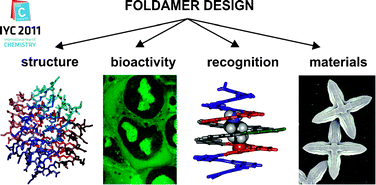
Chem. Commun., 2011,47, 5933-5941
https://doi.org/10.1039/C1CC11137J
Supramolecular gel chemistry: developments over the last decade
Supramolecular gels are fascinating soft materials with a growing list of hi-tech, niche applications. This article reviews the progress in their chemistry over the past decade.
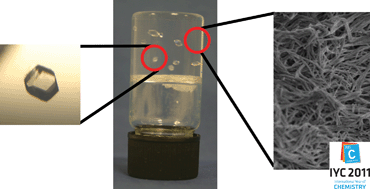
Chem. Commun., 2011,47, 1379-1383
https://doi.org/10.1039/C0CC03293J
Anion receptor chemistry
This highlight article looks back at progress in anion receptor chemistry in the last decade and ahead to developments in sensing, catalysis and transport that are on the horizon.
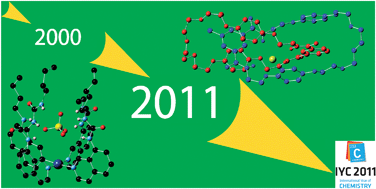
Chem. Commun., 2011,47, 82-86
https://doi.org/10.1039/C0CC00656D
Facile derivatization of azide ions using click chemistry for their sensitive detection with LC-MS
By employing a click reaction, a novel method was developed for the sensitive detection of inorganic azides at as low as 21 ppb.

Chem. Commun., 2011,47, 10377-10379
https://doi.org/10.1039/C1CC11199J
A mesoporous metal–organic framework constructed from a nanosized C3-symmetric linker and [Cu24(isophthalate)24] cuboctahedra
On desolvation, the mesoporous (3,24)-connected framework [Cu3(L)(H2O)3]·(solv) (NOTT-119) shows remarkably high BET surface area (4118(200) m2 g−1), and pore volume (2.35 cm3 g−1).
![Graphical abstract: A mesoporous metal–organic framework constructed from a nanosized C3-symmetric linker and [Cu24(isophthalate)24] cuboctahedra](/en/Image/Get?imageInfo.ImageType=GA&imageInfo.ImageIdentifier.ManuscriptID=C1CC13170B&imageInfo.ImageIdentifier.Year=2011)
Chem. Commun., 2011,47, 9995-9997
https://doi.org/10.1039/C1CC13170B
A facile, modular and high yield method to assemble three-dimensional DNA structures
We have shown a simple, modular and efficient approach to generate a number of three-dimensional prismatic DNA nanostructures at room temperature.
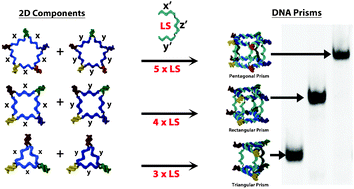
Chem. Commun., 2011,47, 8925-8927
https://doi.org/10.1039/C1CC11726B
Highly porous and robust scandium-based metal–organic frameworks for hydrogen storage
Metal–organic frameworks incorporating binuclear [Sc2(μ2-OH)(O2CR)4] building blocks have been synthesised and characterised showing high BET surface areas and total H2 uptake.
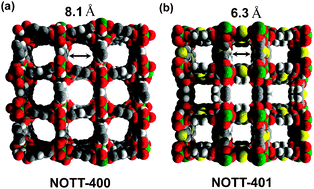
Chem. Commun., 2011,47, 8304-8306
https://doi.org/10.1039/C1CC11168J
Detecting specific saccharides via a single indicator
The time- and wavelength-dependent fluorescence response of a single optical sensor can distinguish between different saccharides.
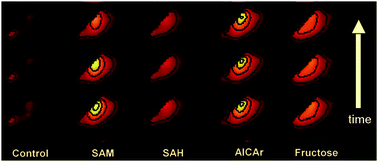
Chem. Commun., 2011,47, 8295-8297
https://doi.org/10.1039/C1CC11343G
In vivo cell death mediated by synthetic ion channels
Hydraphiles form ion channels in membranes that disrupt ion homeostasis, a property that is applied here for tumor ablation therapy.
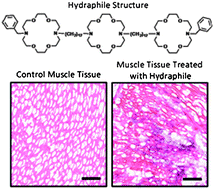
Chem. Commun., 2011,47, 7977-7979
https://doi.org/10.1039/C1CC12933C
Supramolecular architectures based on As(lone pair)⋯π(aryl) interactions
As(lp)⋯π interactions have been shown to be important in providing stability to crystal structures in 20 examples.
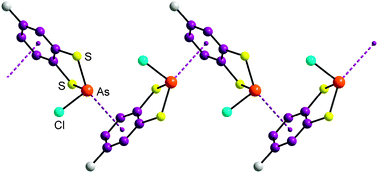
Chem. Commun., 2011,47, 7608-7610
https://doi.org/10.1039/C1CC11412C
Ca2+-induced folding of a chiral ditopic receptor based on a Pybox ligand and enhancement of anion recognition
Anion recognition of a chiral Pybox·Ca2+ foldamer.

Chem. Commun., 2011,47, 6801-6803
https://doi.org/10.1039/C0CC05799A
Luminescence enhancement and tuning via multiple cooperative supramolecular interactions in an ion-paired multinuclear complex
An Ag(I) anilino-bis(pyrazolyl)-triazine luminophore shows multiple bright and tunable emissions influenced by a variety of supramolecular interactions.
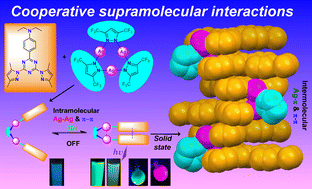
Chem. Commun., 2011,47, 7434-7436
https://doi.org/10.1039/C1CC11161B
A transparent photo-responsive organogel based on a glycoluril supergelator
Control over the gel/sol state of a glycoluril-organogel can be accomplished by irradiation and formation of a capsular supramolecular assembly.
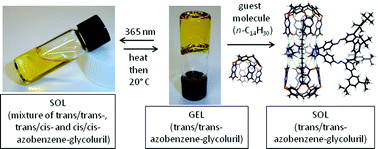
Chem. Commun., 2011,47, 7341-7343
https://doi.org/10.1039/C1CC11354B
Orienting lipid domains in giant vesicles using an electric field
Functionalized lipid domains and protein–membrane assemblies in surface bound giant vesicles were oriented via application of an electric field to introduce asymmetry in supramolecular structure and chemistry.

Chem. Commun., 2011,47, 7320-7322
https://doi.org/10.1039/C1CC11440A
Lanthanide directed self-assembly formations of Tb(III) and Eu(III) luminescent complexes from tryptophan based pyridyl amide ligands
The interactions between Tb(III) and Eu(III) (Ln) and the chiral pyridyl based trpytophan ligands (L) 1 and 2 in CH3CN gave rise to the formation of L22Tb and L22Eu as the main self-assembly products and not the expected L33Ln systems.

Chem. Commun., 2011,47, 7119-7121
https://doi.org/10.1039/C1CC11326G
Squaraine
[2]catenanes : synthesis, structure and molecular dynamics
Three squaraine [2]catenanes are synthesized and found to have bright, deep-red fluorescence, high chemical stability, and unusual molecular dynamics.
![Graphical abstract: Squaraine [2]catenanes: synthesis, structure and molecular dynamics](/en/Image/Get?imageInfo.ImageType=GA&imageInfo.ImageIdentifier.ManuscriptID=C1CC10946D&imageInfo.ImageIdentifier.Year=2011)
Chem. Commun., 2011,47, 7188-7190
https://doi.org/10.1039/C1CC10946D
Guest-controlled aggregation of cavitand gold nanoparticles and N-methyl pyridinium-terminated PEG
The introduction of a disulfide functionalized tetraphosphonate cavitand on Au nanoparticles promotes the reversible assembly of a network upon addition of a suitable polymeric ditopic guest.
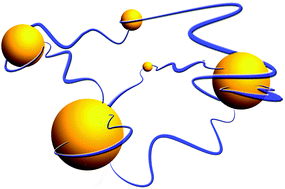
Chem. Commun., 2011,47, 6596-6598
https://doi.org/10.1039/C1CC11192B
M3L2 metallo-cryptophanes: [2]catenane and simple cages
Chiral anti-isomer M3L2 metallo-cryptophanes are with tripodal cyclotriguaiacylene-derivatives, with different ligands yielding either single cages or a triply interlocking [2]catenane.
![Graphical abstract: M3L2 metallo-cryptophanes: [2]catenane and simple cages](/en/Image/Get?imageInfo.ImageType=GA&imageInfo.ImageIdentifier.ManuscriptID=C1CC10806A&imageInfo.ImageIdentifier.Year=2011)
Chem. Commun., 2011,47, 6560-6562
https://doi.org/10.1039/C1CC10806A
Detection of
DNA base variation and cytosine methylation at a single nucleotide site using a highly sensitive fluorescent probe
An anthracene-containing DNA probe can identify all four DNA bases at a single site in a target strand as well as the epigenetic modification C/5-MeC through different fluorescent responses upon duplex formation.
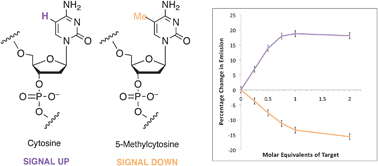
Chem. Commun., 2011,47, 6629-6631
https://doi.org/10.1039/C1CC11205H
Arginine conjugates of metallo-supramolecular cylinders prescribe helicity and enhance DNA junction binding and cellular activity
The conjugation of arginine residues at the ends of a metallo-supramolecular triple-helical cylinder enables absolute control over the helicity of the cylinder core, and significantly enhances the DNA binding and activity.

Chem. Commun., 2011,47, 6575-6577
https://doi.org/10.1039/C1CC11356A
Importance of dynamic hydrogen bonds and reorientation barriers in proton transport
The hydrogen bond donor/acceptor reorientation in phenols is shown to happen on a single oxygen site, resulting in low barriers for reorientation.
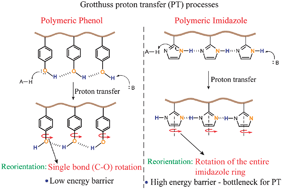
Chem. Commun., 2011,47, 6638-6640
https://doi.org/10.1039/C1CC11207D
Emerging supramolecular synthons: C–H⋯π(chelate) interactions in metal bis(1,1-dithiolates)
Supramolecular synthons of the type C–H⋯π(chelate) are established in the structures of transition metal and main group element 1,1-dithiolates.

Chem. Commun., 2011,47, 6623-6625
https://doi.org/10.1039/C1CC11173F
Chromium chains as polydentate fluoride ligands for lanthanides
Cr6-horseshoes act as fluoride donors towards the lanthanides, making Ln, Ln2 and Ln4 complexes.
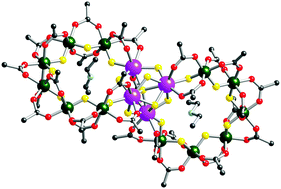
Chem. Commun., 2011,47, 6251-6253
https://doi.org/10.1039/C1CC11516B
Templated assembly of organic–inorganic materials using the core shell structure of the P22 bacteriophage
We have demonstrated that an assembled viral protein cage, comprising an organic core–shell structure, can be used as a template for the size constrained synthesis of Fe2O3.
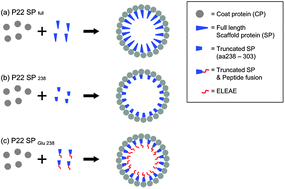
Chem. Commun., 2011,47, 6326-6328
https://doi.org/10.1039/C1CC11215E
Calix[4]arene nitroxide tetraradical and octaradical
1,3-Alternate calix[4]arene with para-phenylene spacers connecting nitroxide monoradicals and high-spin (S = 1) diradicals provides tetraradical and octaradical scaffolds that possess conformations with slow electron spin relaxation rates (1/T1).
![Graphical abstract: Calix[4]arene nitroxide tetraradical and octaradical](/en/Image/Get?imageInfo.ImageType=GA&imageInfo.ImageIdentifier.ManuscriptID=C1CC11172H&imageInfo.ImageIdentifier.Year=2011)
Chem. Commun., 2011,47, 6443-6445
https://doi.org/10.1039/C1CC11172H
Supramolecular photocatalysis: insights into cucurbit[8]uril catalyzed photodimerization of 6-methylcoumarin
Guest induced shape change of the cucurbit[8]uril cavity is likely rate limiting in the supramolecular photocatalytic cycle for CB8 mediated photodimerization of 6-methylcoumarin.
![Graphical abstract: Supramolecular photocatalysis: insights into cucurbit[8]uril catalyzed photodimerization of 6-methylcoumarin](/en/Image/Get?imageInfo.ImageType=GA&imageInfo.ImageIdentifier.ManuscriptID=C1CC11164G&imageInfo.ImageIdentifier.Year=2011)
Chem. Commun., 2011,47, 6323-6325
https://doi.org/10.1039/C1CC11164G
Carrier-mediated electrodialysis
Applied potential across a carrier-containing supported liquid membrane significantly enhances both flux and selectivity.
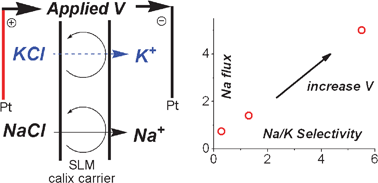
Chem. Commun., 2011,47, 6428-6430
https://doi.org/10.1039/C0CC05551D
Manganese(II) complexes of scorpiand-like azamacrocycles as MnSOD mimics
Polyazamacrocycles belonging to the so-called “scorpiand” family display an interesting behaviour as MnSOD mimics. Crystal structures, speciation, electrochemical and in vitro SOD studies are reported.
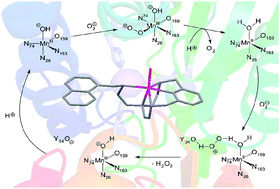
Chem. Commun., 2011,47, 5988-5990
https://doi.org/10.1039/C1CC10526D
Modular ‘click’ sensors for zinc and their application in vivo
The in vivo application in zebrafish of modular “click” fluorescent sensors with high selectivity for zinc is described.
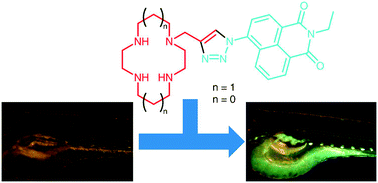
Chem. Commun., 2011,47, 6036-6038
https://doi.org/10.1039/C1CC11213A
Combining carbohydrate substitutions at bioinspired positions with multivalent presentation towards optimising lectin inhibitors : case study with calixarenes
Synthetic carbohydrate modification at sites of natural substitutions teamed up with multivalency is a route to protect cells from harmful lectins.
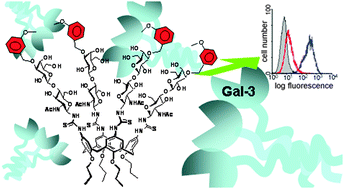
Chem. Commun., 2011,47, 6126-6128
https://doi.org/10.1039/C1CC11163A
Two levels of conformational pre-organization consolidate strong CH hydrogen bonds in chloride–triazolophane complexes
Structural rigidity is verified as a pre-organizational factor that acts with the macrocyclic effect such that synthesis helps in paying the cost of bringing together electropositive CH donors ready for H-bonding with chloride.
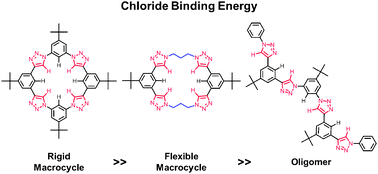
Chem. Commun., 2011,47, 5979-5981
https://doi.org/10.1039/C1CC10428D
Morphological families of self-assembled porphyrin structures and their photosensitization of hydrogen generation
Self-assembly of oppositely charged porphyrins gives morphologically and crystallographically related structures regardless of the metals (Sn or Zn) in the porphyrins.
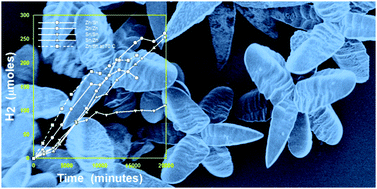
Chem. Commun., 2011,47, 6069-6071
https://doi.org/10.1039/C1CC10868A
Singlet and triplet energy transfer rate acceleration by additions of clusters in supramolecular pigment-organometallic cluster assemblies
Both S1 and T1 energy transfer rates (porphyrin → cluster) increase from mono- to di- to tetracarboxylate[tetraphenyl-(zinc)porphyrin] adducts with [Pd3(dppm)3(CO)]2+ clusters.
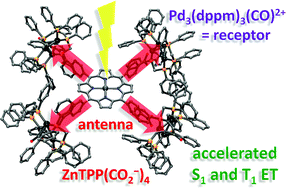
Chem. Commun., 2011,47, 6072-6074
https://doi.org/10.1039/C1CC11174D
Supramolecular polymeric micelles by the host–guest interaction of star-like calix[4]arene and chlorin e6 for photodynamic therapy
A supramolecular drug delivery system has been developed via the self-assembly of a drug-based supramolecular amphiphile constructed by host–guest interaction.
![Graphical abstract: Supramolecular polymeric micelles by the host–guest interaction of star-like calix[4]arene and chlorin e6 for photodynamic therapy](/en/Image/Get?imageInfo.ImageType=GA&imageInfo.ImageIdentifier.ManuscriptID=C0CC05662F&imageInfo.ImageIdentifier.Year=2011)
Chem. Commun., 2011,47, 6063-6065
https://doi.org/10.1039/C0CC05662F
Self-inclusion of proline-functionalised calix[4]arene leads to hydrogelation
The hydrogelation properties of a proline-functionalised calix[4]arene emerge as a result of extended helical structures formed via supramolecular interactions.
![Graphical abstract: Self-inclusion of proline-functionalised calix[4]arene leads to hydrogelation](/en/Image/Get?imageInfo.ImageType=GA&imageInfo.ImageIdentifier.ManuscriptID=C1CC11286D&imageInfo.ImageIdentifier.Year=2011)
Chem. Commun., 2011,47, 6057-6059
https://doi.org/10.1039/C1CC11286D
Photoswitching tetranuclear rhenium(I) tricarbonyl diimine complexes with a stilbene-like bridging ligand
Highly efficient photoswitching tetranuclear rhenium(I) tricarbonyl diimine complexes with a stilbene-like bridging ligand are reported. Directly populating excited states localized on the bridging ligand results in effective photoisomerization.
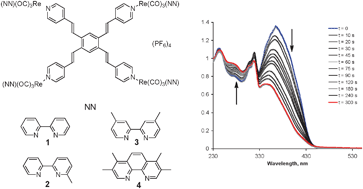
Chem. Commun., 2011,47, 6030-6032
https://doi.org/10.1039/C1CC11272D
An expanded neutral M4L6 cage that encapsulates four tetrahydrofuran molecules
Expanding a bis-β-diketone ligand by extending the bridge between the coordination domains from phenylene to biphenylene leads to a near 5-fold increase in the central cavity, one THF molecule occupies the small cavity while the expanded analogue holds four.
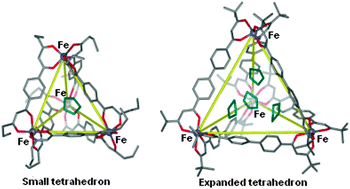
Chem. Commun., 2011,47, 6042-6044
https://doi.org/10.1039/C1CC11167A
Supramolecular chirality transfer to large random aggregates of porphyrins
Chirality can be transferred to preformed fractal aggregates of a Cu(II) metalloporphyrin, whose CD spectrum is initially silent, through the interaction with polyglutamic acid molecules acting as the source of chiral information.
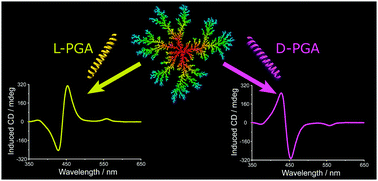
Chem. Commun., 2011,47, 6045-6047
https://doi.org/10.1039/C1CC11165E
Enhanced photocurrents via redox modulation by fluoride binding to oxoporphyrinogen in a zinc porphyrin -oxoporphyrinogen surface modified TiO2 supramolecular solar cell
A novel approach for improving a supramolecular solar cell by redox tuning through fluoride anion binding to the redox active host is demonstrated.
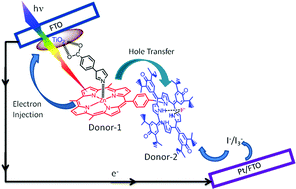
Chem. Commun., 2011,47, 6003-6005
https://doi.org/10.1039/C1CC10802F
Colour coding the co-conformations of a [2]rotaxane flip-switch
A [2]rotaxane flip-switch can exist in either of two distinct co-conformers. Fine-tuning the charge transfer chromophores in a series of flip-switches yielded a unique optical signal (purple colour) for one of the interactions allowing for facile determination of the position of the flip-switch equilibrium and the distribution of co-conformers.
![Graphical abstract: Colour coding the co-conformations of a [2]rotaxane flip-switch](/en/Image/Get?imageInfo.ImageType=GA&imageInfo.ImageIdentifier.ManuscriptID=C1CC10948K&imageInfo.ImageIdentifier.Year=2011)
Chem. Commun., 2011,47, 5991-5993
https://doi.org/10.1039/C1CC10948K
Lewis acid enhanced switching of the 1,1-dicyanodihydroazulene/vinylheptafulvene photo/thermoswitch
Mild Lewis acids enhance thermal conversion of vinylheptafulvene (VHF) to dihydroazulene (DHA), while stronger Lewis acids promote ring-opening of DHA.
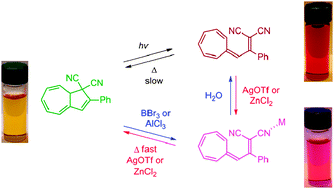
Chem. Commun., 2011,47, 6102-6104
https://doi.org/10.1039/C1CC10804B
“On-demand” control of thermoresponsive properties of poly(N-isopropylacrylamide) with cucurbit[8]uril host–guest complexes
Chain end complexation of a functional PNIPAM by a cucurbit[8]uril-viologen complex causes a shift in its lower critical solution temperature (LCST) by over 5 °C.
![Graphical abstract: “On-demand” control of thermoresponsive properties of poly(N-isopropylacrylamide) with cucurbit[8]uril host–guest complexes](/en/Image/Get?imageInfo.ImageType=GA&imageInfo.ImageIdentifier.ManuscriptID=C1CC11214G&imageInfo.ImageIdentifier.Year=2011)
Chem. Commun., 2011,47, 6000-6002
https://doi.org/10.1039/C1CC11214G
Combining coordination and supramolecular chemistry for the formation of uranyl-organic hybrid materials
Combined use of supramolecular and coordination chemistry results in a new family of uranyl-bearing hybrid materials.
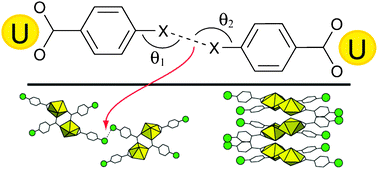
Chem. Commun., 2011,47, 6114-6116
https://doi.org/10.1039/C1CC11116G
Sodium and barium cation-templated synthesis and cation -induced molecular pirouetting of a pyridine N-oxide containing [2]rotaxane
Sodium and barium metal cation templation has been used to construct a pyridine N-oxide containing [2]rotaxane which undergoes a pirouetting molecular motion upon addition and removal of these cations
![Graphical abstract: Sodium and barium cation-templated synthesis and cation-induced molecular pirouetting of a pyridine N-oxide containing [2]rotaxane](/en/Image/Get?imageInfo.ImageType=GA&imageInfo.ImageIdentifier.ManuscriptID=C1CC11224D&imageInfo.ImageIdentifier.Year=2011)
Chem. Commun., 2011,47, 6012-6014
https://doi.org/10.1039/C1CC11224D
Influence of charge repulsion on binding strengths: experimental and computational characterization of mixed alkali metal complexes of decamethylcucurbit[5]uril in the gas phase
Gas phase calculations and experiments agree that binding strengths depend strongly on the proximity of the binding sites for two ions.
![Graphical abstract: Influence of charge repulsion on binding strengths: experimental and computational characterization of mixed alkali metal complexes of decamethylcucurbit[5]uril in the gas phase](/en/Image/Get?imageInfo.ImageType=GA&imageInfo.ImageIdentifier.ManuscriptID=C1CC11090J&imageInfo.ImageIdentifier.Year=2011)
Chem. Commun., 2011,47, 6081-6083
https://doi.org/10.1039/C1CC11090J
A gemini guest triggers the self-assembly of a calixarene capsule in water at neutral pH
A gemini guest induces the self-assembly of a homodimeric capsule when interacting with a calixarene-based host in neutral aqueous solution.
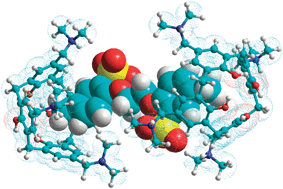
Chem. Commun., 2011,47, 6117-6119
https://doi.org/10.1039/C1CC11211B
Chiral porphyrin dimer with a macrocyclic cavity for intercalation of aromatic guests
Chiral diporphyrin receptor 1 enabled the naked-eye detection of an aromatic explosive as well as chiral discrimination in NMR.
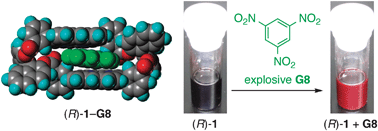
Chem. Commun., 2011,47, 6090-6092
https://doi.org/10.1039/C1CC11572C
Linking [FeIII3] triangles with “double-headed”phenolic oximes
The use of “double-headed” phenolic oximes produces a trigonal antiprismatic [FeIII3]2 cluster with an “internal cavity” filled with an additional Fe3+ ion.
![Graphical abstract: Linking [FeIII3] triangles with “double-headed”phenolic oximes](/en/Image/Get?imageInfo.ImageType=GA&imageInfo.ImageIdentifier.ManuscriptID=C1CC11146A&imageInfo.ImageIdentifier.Year=2011)
Chem. Commun., 2011,47, 6018-6020
https://doi.org/10.1039/C1CC11146A
Reversible anion-templated self-assembly of [2+2] and [3+3] metallomacrocycles containing a new dicopper(I) motif
A dicopper(I) complex is incorporated into extended architectures through reversible carboxylate templation under pH control forming [2+2] and [3+3] metallomacrocycles.
![Graphical abstract: Reversible anion-templated self-assembly of [2+2] and [3+3] metallomacrocycles containing a new dicopper(i) motif](/en/Image/Get?imageInfo.ImageType=GA&imageInfo.ImageIdentifier.ManuscriptID=C1CC11206F&imageInfo.ImageIdentifier.Year=2011)
Chem. Commun., 2011,47, 6021-6023
https://doi.org/10.1039/C1CC11206F
Anomalous thermal expansion of an organic crystal—implications for elucidating the mechanism of an enantiotropic phase transformation
Two enantiotropic polymorphs of a dumbbell shaped molecule possess similar packing arrangements but one of the polymorphs shows anomalously anisotropic thermal expansion while the other does not.
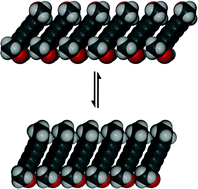
Chem. Commun., 2011,47, 6009-6011
https://doi.org/10.1039/C1CC10716J
Cyclo[2]benzimidazole : luminescence turn-on sensing of anions
Cyclo[2]benzimidazole is a new host for anions that turns on its luminescence up to 150 fold upon binding.
![Graphical abstract: Cyclo[2]benzimidazole: luminescence turn-on sensing of anions](/en/Image/Get?imageInfo.ImageType=GA&imageInfo.ImageIdentifier.ManuscriptID=C1CC10995B&imageInfo.ImageIdentifier.Year=2011)
Chem. Commun., 2011,47, 6087-6089
https://doi.org/10.1039/C1CC10995B
Anion-directed assembly of a three-dimensional metal–organic rotaxane framework
A new one-pot self-assembly process is used to create a three-dimensional extended, metal–organic rotaxane framework (MORF) that incorporates encircled “struts”.

Chem. Commun., 2011,47, 5973-5975
https://doi.org/10.1039/C1CC10272A
Covalent ladder formation becomes kinetically trapped beyond four rungs
Scrambling experiments suggest that oligomers cross-linked by four imine bonds are kinetically trapped, limiting the synthesis of covalent ladders with five or more rungs.
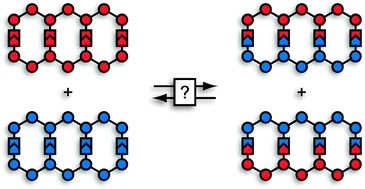
Chem. Commun., 2011,47, 5028-5030
https://doi.org/10.1039/C1CC11242B
New polymorphs of curcumin
Two new crystalline polymorphs and an amorphous phase of curcumin, the most active chemical ingredient of turmeric, are reported. The new Form 2 has higher solubility and dissolution rate compared to the known commercial form.

Chem. Commun., 2011,47, 5013-5015
https://doi.org/10.1039/C1CC10204D
Open aryl triazole receptors: planar sheets, spheres and anion binding
The morphology of the aggregates formed from the self-assembly of aryl triazole amphiphiles is disrupted upon the binding of a bromide anion due to the conformational changes experienced by these receptors.
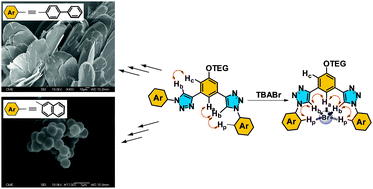
Chem. Commun., 2011,47, 5016-5018
https://doi.org/10.1039/C0CC05685E
A smart magnetic resonance imaging contrast agent responsive to adenosine based on a DNA aptamer-conjugated gadolinium complex
The relaxivity of the gadolinium compound is regulated by the presence of adenosine.
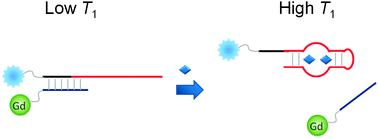
Chem. Commun., 2011,47, 4998-5000
https://doi.org/10.1039/C1CC10161G
Self-assembly and conductivity of hydrogen-bonded oligothiophene nanofiber networks
Symmetric oligothiophene derivatives containing hydrogenbonding groups form self-supporting organogels with conductive supramolecular networks of 1D nanostructures.
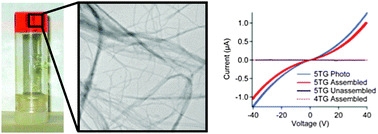
Chem. Commun., 2011,47, 5702-5704
https://doi.org/10.1039/C1CC10809C
Encapsulation of transition metal atoms into carbon nanotubes : a supramolecular approach
A functionalised fullerene incorporating a double-chelating group binds transition metal cations and acts as an effective vehicle for delivering metals into carbon nanotubes.
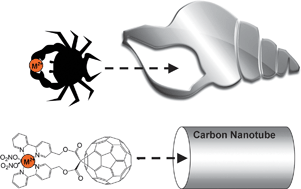
Chem. Commun., 2011,47, 5696-5698
https://doi.org/10.1039/C1CC10427F
Donor-extended tripodal pyrroles : encapsulation, metallation , and H-bonded tautomers
We have shown that the addition of imine substituents to a tripodal pyrrole results in a versatile platform for both metallation and supramolecular interactions.
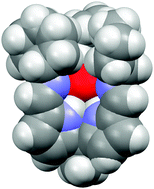
Chem. Commun., 2011,47, 5711-5713
https://doi.org/10.1039/C1CC11378J
The importance of methylation in the binding of (ferrocenylmethyl)tempammonium guests by cucurbit[n]uril (n = 7, 8) hosts
The extent of methylation of a guest's ammonium nitrogen controls the predominant binding site with the cucurbit[8]uril host.
![Graphical abstract: The importance of methylation in the binding of (ferrocenylmethyl)tempammonium guests by cucurbit[n]uril (n = 7, 8) hosts](/en/Image/Get?imageInfo.ImageType=GA&imageInfo.ImageIdentifier.ManuscriptID=C1CC11212K&imageInfo.ImageIdentifier.Year=2011)
Chem. Commun., 2011,47, 5500-5502
https://doi.org/10.1039/C1CC11212K
Engineering molecular crystals with abnormally weak cohesion
Adding methyl groups to hexaphenylbenzene weakens key C–H⋯π interactions, thereby decreasing enthalpies of sublimation and showing that materials with weak cohesion can be made by identifying and obstructing key interactions.
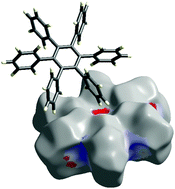
Chem. Commun., 2011,47, 5163-5165
https://doi.org/10.1039/C1CC10866B
New insights into the aggregation of silver pyrazolides using sterically hindered bidentate pyrazole ligands
Recrystallisation of Ag[L1] (HL1 = 3{5}-[pyrid-2-yl]-5{3}-tert-butylpyrazole) in the presence of exogenous anions leads to two polymorphs of [Ag3(μ-Br)(μ-L1)2], and to [Ag10(μ-L1)8]Cl2 (shown). In contrast, Ag[L2] (HL2 = 3{5}-[isoquinol-1-yl]-5{3}-tert-butyl-pyrazole) crystallises as a cyclic tetrameric molecule.
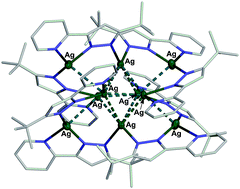
Chem. Commun., 2011,47, 5187-5189
https://doi.org/10.1039/C1CC00054C
Aldehyde responsive supramolecular hydrogels: towards biomarker -specific delivery systems
A reactive supramolecular hydrogel reacts with hydrophobic aldehydes causing disassembly of the fibrillar network and release of molecules entrapped within.
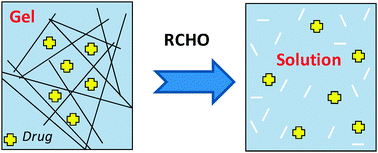
Chem. Commun., 2011,47, 4706-4708
https://doi.org/10.1039/C1CC10640F
Templated dynamic cryptophane formation in water
The pH-responsive cryptophane spontaneously assembles in water from two cyclotribenzylenes and three linker units in the presence of a suitable guest.

Chem. Commun., 2011,47, 4511-4513
https://doi.org/10.1039/C1CC10510H
High capacity gas storage by a 4,8-connected metal–organic polyhedral framework
The porous polyhedral complex [Cu4L(H2O)4]solv (NOTT-140), incorporating an octacarboxylate isophthalate linker, shows scu topology comprising octahedral and cuboctahedral cages; desolvated NOTT-140a shows impressive storage capacities for CH4, CO2 and H2.
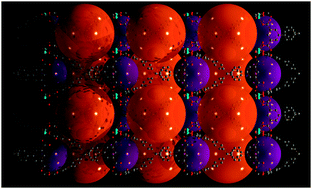
Chem. Commun., 2011,47, 4487-4489
https://doi.org/10.1039/C1CC10378D
A simple fluorescence assay for the detection of fluoride in water at neutral pH
Detection of anions with cation sensors: the combination of a fluorescent indicator and a calcium salt can be used to sense low millimolar concentrations of fluoride ions in water and in complex samples such as dental health products.
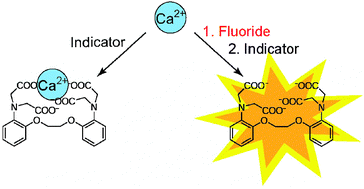
Chem. Commun., 2011,47, 4391-4393
https://doi.org/10.1039/C1CC10498E
A permanently porous van der Waals solid by using phosphonate monoester linkers in a metal organic framework
A new class of phosphonate monoester ligands is used to make a porous MOF with a structure that is supported by weak van der Waals interactions between alkyl chains.
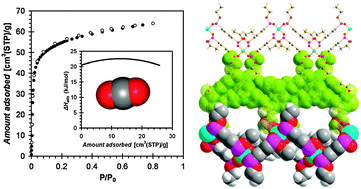
Chem. Commun., 2011,47, 4430-4432
https://doi.org/10.1039/C0CC04779A
Synthon polymorphism and pseudopolymorphism in co-crystals. The 4,4′-bipyridine–4-hydroxybenzoic acid structural landscape
The structural landscape for the 4,4′-bipyridine–4-hydroxybenzoic acid system consists of two polymorphs and two pseudopolymorphs.
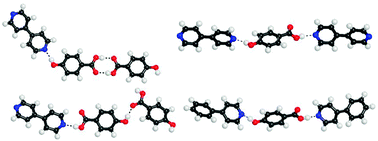
Chem. Commun., 2011,47, 4090-4092
https://doi.org/10.1039/C0CC05857B
Interplay between the diamine structure and absolute helicity in Ni–salen metallofoldamers
The ratio of helical diastereomers for Ni–salen based metallofoldamers varies significantly depending upon the nature of the chiral diamine subunit.
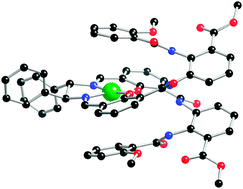
Chem. Commun., 2011,47, 3781-3783
https://doi.org/10.1039/C0CC04794E
About this collection
To mark the International Year of Chemistry 2011, ChemComm is publishing a major web collection of articles on Supramolecular Chemistry.
Supramolecular Chemistry is all about interactions between molecules: how they can recognise each other, assemble and function on a molecular scale. It provides a bottom up approach to nanoscale systems with applications ranging from biology to materials science.
The chemistry presented in this ChemComm web-theme will be from the leaders in supramolecular chemistry with applications across many areas.
The guest editors of this issue are Philip Gale, Jonathan Sessler and Jonathan Steed.
Articles in this web-theme will be added to the list below as soon as possible after publication. Please return to this page frequently to see this collection grow.